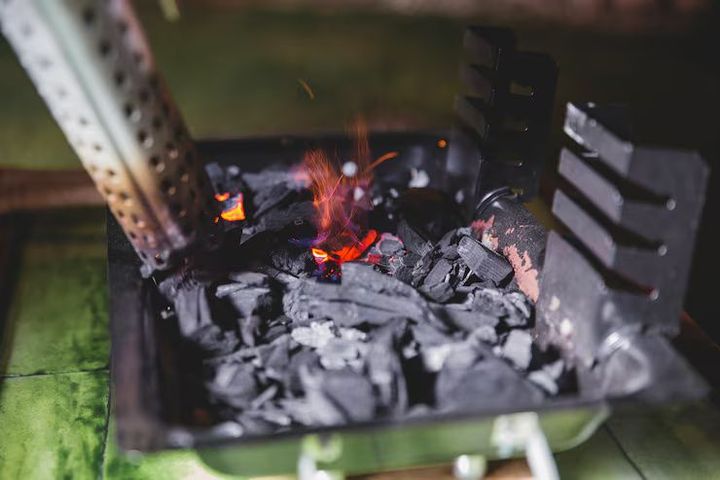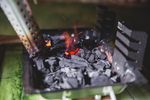
Coal Crushing Machine Overview: Understanding Key Components and Working Principles
Coal crushing machines are industrial equipment used to reduce large chunks of coal into smaller, usable sizes for power generation, metallurgy, cement manufacturing, and other applications. These machines play a central role in material handling systems and coal processing operations by improving the efficiency of transportation, combustion, and storage.
Their purpose is not only to break coal into desired size ranges but also to ensure uniformity and consistency in quality. This makes coal crushing machines essential in mining equipment workflows and energy production systems, where even minor variations in material size can influence efficiency and performance.

Context
Coal has been used as a primary energy source for centuries, powering industries, transportation systems, and electricity generation. Before coal can be used in boilers, furnaces, or processing plants, it must be crushed and processed into a manageable form. This is where coal crushing machines play an essential role.
Crushing machines are found in coal mines, thermal power stations, coking plants, steel plants, and industrial manufacturing operations. Their design varies depending on material hardness, input size, required output size, and environmental conditions. The machines help create consistent coal particle sizes that burn more efficiently and transport more easily.
Importance
Coal crushing machines are important in several industrial and environmental contexts:
Ensuring Efficient Combustion
-
Properly sized coal burns more evenly.
-
Smaller, uniform coal pieces improve heat distribution in boilers and furnaces.
Enhancing Material Handling
-
Crushed coal is easier to convey, store, and mix.
-
Reduces equipment strain on conveyor belts, loaders, and milling systems.
Supporting Industrial Production
-
Industries such as steel, cement, and chemicals rely on precise energy control.
-
Consistent coal size helps stabilize production efficiency.
Reducing Waste and Environmental Impact
-
Uniform coal reduces emissions associated with unburned carbon and particulate output.
-
Helps optimize combustion and minimize excess fuel consumption.
These machines influence workers in mining operations, engineers in processing plants, and energy management professionals in power generation facilities. Their efficiency affects production rates, energy output stability, and environmental compliance.
Recent Updates
The coal processing and crushing sector has seen notable changes in the past year (2024–2025):
Shift Toward Automation and Remote Monitoring (2024)
Industrial automation and sensor-based monitoring have become more common in crushing plants. Systems now track equipment temperature, vibration, and output feed size in real time to prevent breakdowns and energy waste.
Focus on Dust Control and Air Quality Standards (2024)
More crushing facilities implemented dust suppression technologies following stricter workplace air quality guidelines. Water misting systems, enclosed conveyor structures, and improved ventilation have become standard in many regions.
Material Optimization and Wear-Resistant Components (2025)
Manufacturers have introduced advanced alloy and ceramic-coated hammer and jaw components to extend equipment lifespan. This reduces downtime, improves energy efficiency, and supports more stable long-term operations.
Integration with Smart Material Handling Systems (2025)
Crushing machines are increasingly being integrated into automated workflows involving conveyor sensors and automated heavy-duty feeders to reduce manual labor and improve safety.
Laws or Policies
Coal crushing operations are influenced by regulatory frameworks that vary by country. Generally, these include:
Environment and Air Quality Regulations
-
Many regions require dust suppression systems and emissions monitoring in crushing zones.
-
Regulations often limit particulate matter (PM2.5, PM10) emissions.
Workplace Health and Safety Rules
-
Mandatory use of protective equipment in crushing units.
-
Requirements for noise control and machine guarding systems.
Energy Efficiency Guidelines
-
Some countries encourage modernization of coal processing facilities to improve efficiency and reduce energy waste.
-
Incentives sometimes exist for operations that upgrade to automation or low-emission technologies.
Mining and Material Transport Policies
-
Standards for coal handling, transportation, and loading apply to ensure safety and prevent spillage.
These rules aim to protect workers, reduce environmental impact, and promote responsible industrial operation.
Key Components and Working Principles
Coal crushing machines vary in design, but most include these core components:
| Component | Function |
|---|---|
| Feeder | Regulates the flow of coal into the crusher. |
| Crusher Unit (Jaw, Hammer, Roller, or Cone) | Performs the mechanical crushing action. |
| Drive Motor | Powers the crushing mechanism. |
| Screen or Sieve System | Ensures produced coal meets size specifications. |
| Conveyor or Discharge System | Moves crushed coal to the next processing stage. |
Working Principle
-
Coal is fed into the machine through the feeder.
-
Mechanical force—compression, impact, shear, or abrasion—breaks the coal.
-
The crushed coal is screened to ensure size consistency.
-
Oversized particles are re-routed for further crushing.
-
Final output is discharged for storage or immediate use.
Tools and Resources
Helpful tools and references for engineers, technicians, and students:
-
Material Size Calculator (for estimating required crush size)
-
Industrial Conveyor Design Guides (for material handling optimization)
-
Online Mechanical Engineering Learning Platforms (for design and maintenance training)
-
Coal Combustion and Efficiency Monitoring Software
-
Safety Audit Checklists for Industrial Plants
These resources support planning, design analysis, operational monitoring, and safety compliance.
FAQs
What types of coal crushers are commonly used?
Common types include jaw crushers, hammer crushers, roll crushers, and cone crushers. The choice depends on coal hardness, moisture, and output size requirements.
Why is uniform coal size important?
Uniform coal ensures stable combustion, improves heat efficiency, reduces waste, and protects equipment from strain or clogging.
Are coal crushing machines used only in mining?
No. They are also used in power plants, cement factories, steel manufacturing, and chemical processing facilities.
How is dust managed during coal crushing?
Dust control measures include water mist sprays, enclosed crushing zones, ventilation systems, and air filtration units.
Does automation improve crushing efficiency?
Yes. Automation helps monitor performance, reduce downtime, enhance safety, and optimize energy use.
Conclusion
Coal crushing machines are essential components in coal processing, energy production, and heavy industrial operations. By converting raw coal into uniform, workable particles, they improve combustion efficiency, stabilize manufacturing processes, and support effective material management. Recent advancements in automation, wear-resistant materials, and dust control have strengthened performance and safety standards. Understanding their components, working principles, and regulatory considerations helps organizations operate responsibly and efficiently in industries that still depend on coal as a critical energy and production resourc






